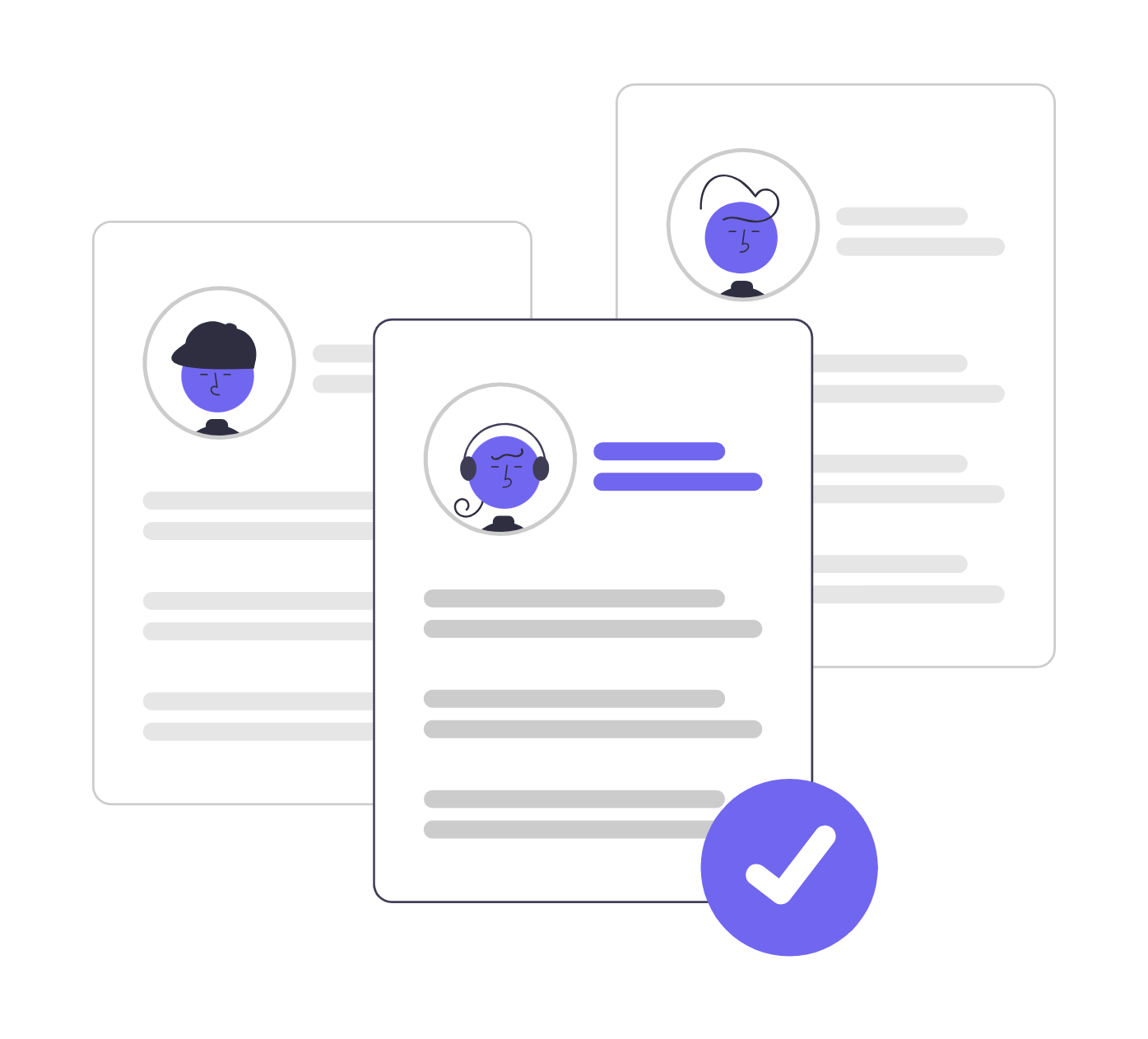Share
When you’re trying to scale fast or fill specialized roles, waiting months for a new hire to ramp up is not an option. That’s where lateral hiring comes in—a strategic shortcut that brings in professionals who are already doing the job somewhere else and can hit the ground running from day one.
But what exactly is lateral hiring? Why is it more relevant than ever in today’s market? And how can you do it well—without falling into common traps?
In this article, we’ll break down the real meaning, benefits, challenges, and strategy behind lateral hiring. Whether you’re a startup founder, enterprise recruiter, or team lead looking to level up your hiring game, this guide is your go-to playbook.
🔍 What Is Lateral Hiring, Really?
Lateral hiring (or lateral recruitment) refers to bringing in talent from outside the organization for a role similar in seniority, responsibility, and pay to their current one. Unlike entry-level or vertical promotions, lateral hires are brought in to solve specific problems quickly—with minimal onboarding or training required.
This approach is especially popular in industries like tech, law, healthcare, and finance—where domain expertise, certifications, and experience matter more than just potential.
“Lateral hire” literally means hiring ‘from the side’—not from the bottom or above, but someone already performing at the desired level.
Quickly identify your most promising candidates. WorkScreen automatically evaluates, scores, and ranks applicants on a performance-based leaderboard—making it easy to spot top talent, save time, and make smarter, data-driven hiring decisions.

💡 Why Lateral Hiring Matters More Than Ever
Lateral hiring is no longer just a tactical decision—it’s become a strategic necessity in fast-paced industries where speed, skill, and cultural fluency determine success.
Here’s why:
✅ Faster Time-to-Impact
Lateral hires are already trained, certified, and doing the job elsewhere. That means they can start contributing almost immediately, reducing the ramp-up period dramatically.
✅ Access to Specialized Talent
Need a machine learning engineer with domain experience in e-commerce? Or a healthcare compliance expert? Lateral hiring is the most efficient way to fill niche roles without gambling on inexperienced candidates.
Easily administer one-click skill tests with workscreen. -This way you can Assess candidates based on real-world ability—not just credentials like résumés and past experience. This helps you hire more confidently and holistically.

✅ Infuses New Perspectives
External lateral hires often bring innovative processes, market insights, or customer strategies from previous employers—helping your company avoid echo chambers and stagnation.
✅ Reduces Training Costs
Less training = lower onboarding costs. You save on internal resources, workshops, and productivity loss typically associated with training junior hires.
✅ Retention Through Internal Lateral Moves
Lateral hiring isn’t always external. Internal lateral transfers (moving an employee from one department to another at the same level) boost retention by giving employees career flexibility without changing companies.
🧱 Challenges You Need to Navigate
Lateral hiring isn’t a silver bullet. It comes with its own set of risks and trade-offs:
⚠️ Culture Fit Can Be Tricky
Even if someone’s technically perfect, they might clash with your team’s culture. Always screen for soft skills and collaborative ability, not just experience.
⚠️ Pay Expectations Can Be Higher
Experienced talent costs more. Lateral hires often expect competitive salary packages or signing bonuses, especially if they’re not actively job hunting.
⚠️ Overqualification Risks
Some lateral hires may feel underutilized if the role isn’t challenging enough—leading to early churn or disengagement.
Eliminate low-effort applicants—including those who use AI Tools to apply, copy-paste answers, or rely on "one-click apply." This way, you focus only on genuine, committed, and high-quality candidates—helping you avoid costly hiring mistakes.

⚠️ Internal Resistance
Bringing in an external hire for a role that could’ve gone to someone internal can breed resentment—especially if your internal mobility process isn’t transparent.
🛠️ How to Do Lateral Hiring the Right Way
A successful lateral hire starts with the right strategy. Here’s a step-by-step process that leading companies use:
1. Define the Role with Precision
Clarify what specific skills, experience, and business outcomes the role requires. Lateral roles should not be vague catch-alls.
2. Use Targeted Sourcing Tactics
Referrals, LinkedIn outreach, alumni networks, and headhunters work better for passive, high-level candidates than job boards.
🔥 Tip: Most lateral hires are passive—meaning they’re not actively job-seeking. Your pitch matters.
3. Sell the Opportunity, Not Just the Job
Position the role as a strategic career move, not a lateral sidestep. Highlight your culture, autonomy, tech stack, or growth potential.
4. Structure a Smart Interview Process
Focus interviews on real-world problem solving, decision-making, and team fit. Skip beginner-level questions—they’ll tune out.
5. Offer Fair, Competitive Compensation
Be ready to match or beat their current offer. Add value with remote flexibility, equity, team culture, or project scope.
6. Tailor Your Onboarding
Don’t treat lateral hires like newbies. Give them mentors, clear objectives, and autonomy from day one. Respect their expertise.
🌎 Internal vs External Lateral Hiring: When to Use Each
Type | When to Use It |
External Lateral Hire | When internal skills don’t match needs, or you need an outside perspective |
Internal Lateral Transfer | When you want to retain talent, re-engage burned-out employees, or offer career mobility |
Both approaches reduce time-to-fill and help avoid “starting from scratch.”
🧠 Real-World Insight: Lateral Transfers in Regulated Industries
In law enforcement or government roles, lateral transfers often require:
- State-level re-certification or academy training
- Pay step alignment (but reset in seniority)
- Full background checks—even for experienced officers
Lesson: Even in highly structured industries, lateral hiring works—but requires due diligence.
🎯 Final Thoughts: Why Lateral Hiring Should Be Part of Your Talent Strategy
Lateral hiring isn’t just a shortcut. It’s a smart, strategic lever that lets you build stronger teams, faster—without sacrificing quality.
Used correctly, it helps you:
- Save time and hiring costs
- Increase team performance quickly
- Bring in innovation and fresh perspectives
- Offer career growth within your organization
- Reduce churn by aligning skills with passion
So whether you’re looking to fill a high-skill vacancy fast or give a great employee a new challenge—don’t overlook lateral hiring. It’s one of the most underrated tools in the modern hiring toolkit.
FAQ
A: Lateral hires often fail due to poor cultural fit, misaligned expectations, or overqualification. While they may have the technical expertise, they might struggle to integrate into the new team or adapt to different processes and values. Additionally, if the new role feels like a step sideways with no growth potential, it can lead to low engagement and early turnover. To avoid this, companies should prioritize both technical fit and soft skills during the hiring process—and provide personalized onboarding.
A: It depends on your business goals:
- Lateral hiring is best for immediate expertise and fast onboarding, especially in niche or high-impact roles.
- Internal promotion (vertical hiring) supports long-term growth and employee retention.
- Campus hiring is ideal for building a pipeline of entry-level talent over time.
Most companies use a mix of all three to balance cost, retention, and performance needs.
A: The hiring process typically involves:
- Sourcing and screening – Identifying potential candidates and evaluating qualifications.
- Interviewing and evaluation – Assessing skills, culture fit, and potential through structured interviews or assessments.
Selection and onboarding – Making an offer, negotiating terms, and helping the hire integrate successfully into the team.
In lateral hiring, the evaluation phase should include industry-specific or real-world performance assessments.
A: Traditional hiring often involves entry-level candidates or career advancement from within, while lateral hiring brings in someone with proven experience at the same level. It’s faster, more targeted, and focused on specific skill gaps or strategic needs.
A: Use behavioral interviews, team-based assessments, and peer introductions to evaluate how well the candidate aligns with company values. Culture fit should be assessed as carefully as technical skills to avoid friction after hiring.

